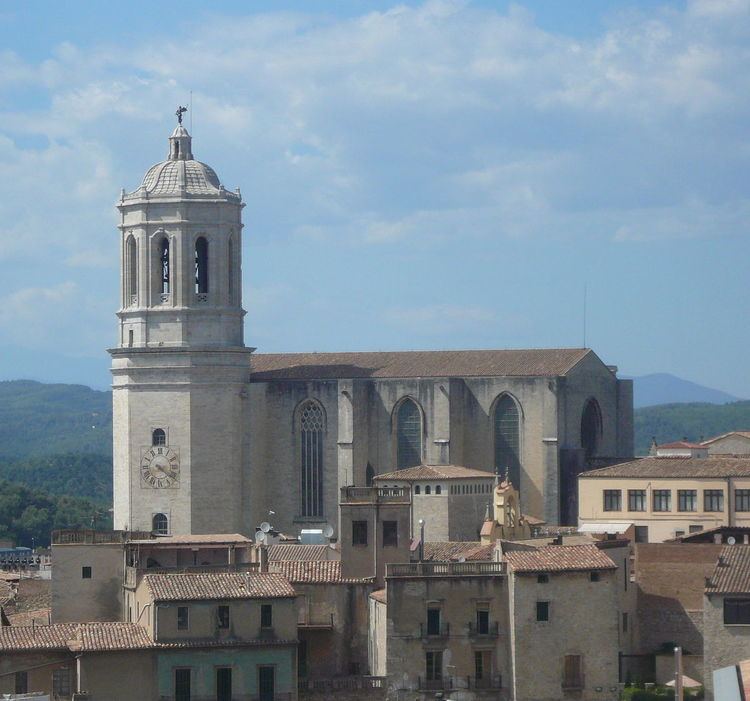Phone +34 972 41 27 20 | Ecclesiastical province Tarragona Denomination Roman Catholic Area 4,705 km² | |
 | ||
Population- Total- Catholics (as of 2006)740,214630,000 (85.1%) Hours Open today · 9:30AM–1:30PMWednesday9:30AM–1:30PMThursday9:30AM–1:30PMFriday9:30AM–1:30PMSaturdayClosedSundayClosedMonday9:30AM–1:30PMTuesday9:30AM–1:30PMSuggest an edit Similar Cathedral of Girona, Ciutat De Girona, Palau Girona‑F, Institut Santa Eugènia, Fundació Esplai Girona Profiles | ||
The Roman Catholic Diocese of Girona (Latin: Gerunden(sis)) is a diocese located in the city of Girona in the Ecclesiastical province of Tarragona in Catalonia, Spain.
Contents
History
The first historical mention of a Christian diocese in Girona is in a paper for Pope Innocent I in 397-400. On 18 June, 517, a synod convened here was attended by the Archbishop of Tarragona and six bishops; canons were promulgated dealing with the recitation of the Divine Office, infant baptism and the celibacy of the clergy.
About 885 Bishop Ingobert of Urgell was expelled from his see by the intruder Selva, who, under the protection of the Count of Urgell, was consecrated in Gascony. This usurper also unlawfully placed Hermemiro over the see of Girona. In 892 a synod was held in the Church of Santa Maria in Urgell; the two usurpers were deposed, their vestments rent, their crosiers broken over their heads, and they were deprived of their sacerdotal faculties.
A council held in Lleida in 1246 absolved James I of Aragon from the sacrilege of cutting out the tongue of the Bishop of Girona. Another synod at Girona in 1078 affirmed the nullity of simoniacal ordinations.
Honoured with papal prerogatives relating to the pilgrim routes to Santiago de Compostela, the Church of Le Puy assumed a sort of informal primacy in respect to most of the Churches of France, and even of Christendom, manifesting itself practically in a 'right to beg', established with the authorization of the Holy See, in virtue of which the chapter of Le Puy levied a veritable tax upon almost all the Christian countries to support its hospital of Notre-Dame. In Catalonia this droit de quête, recognized by Spanish Crown, was so thoroughly established that the chapter had its collectors permanently installed in that country.
A famous "fraternity" existed between the chapter of Le Puy and that of Girona in Catalonia. The earliest document in which it is mentioned dates only from 1470, and it involves that at this date the chapter of Girona, in order to escape the financial thraldom which bound it, like many Catalonian Churches, to the chapter of Le Puy, alleged its "fraternity" involving its equality—with the Church of Le Puy. In 1479 and in 1481 Pierre Bouvier, a canon of Le Puy, came to Girona, where the canons invoked against him a legend according to which Charlemagne had taken Girona, rebuilt its cathedral, given it a canon of Le Puy for a bishop, and established a fraternity between chapters of Girona and Le Puy. Based on this legend they appealed to the liturgical Office which they chanted for the feast of Charlemagne—an Office, dating from 1345, but in which they had recently inserted these tales of the Church of LePuy. In 1484 Sixtus IV prohibited the use of this Office, whereupon there appeared at Girona the "Tractatus de captione Gerunde", reaffirming the Girona legend about the fraternity with Le Puy.
Down to the last days of the old regime the two chapters frequently exchanged courtesies; canons of Le Puy passing through Girona and canons of Girona passing through Le Puy enjoyed special privileges. In 1883 the removal by the Bishop of Girona of the statue of Charlemagne from that cathedral marked the definitive collapse of the whole fabric of legends out of which the hermandad (brotherhood) between Le Puy and Girona had grown.
On April 10, 1992 the diocese was renamed as Diocese of Girona.
